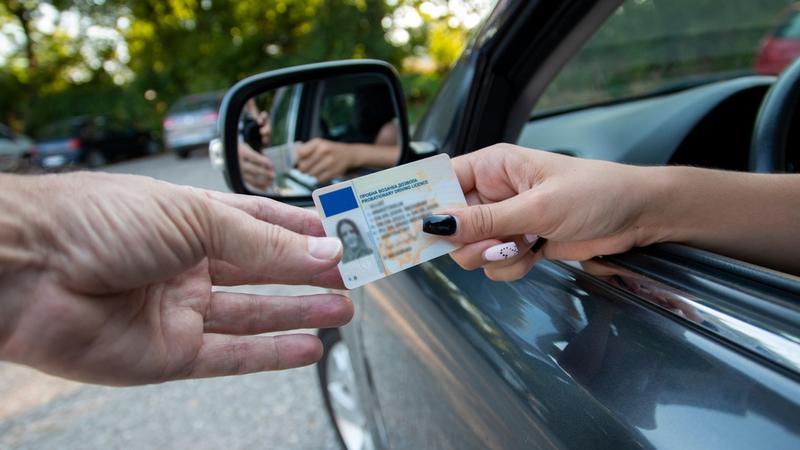What type of driver's licence you have can significantly affect your auto insurance rates in Ontario. In this in-depth guide, we'll uncover the influence your driver's licence has on your insurance. We'll also navigate through a range of key factors, such as the best time to get auto insurance, how getting a G2 or full G licence impacts your premium, and how to save money on insurance – no matter your licence class.
How Ontario’s graduated licencing system works
It’s true that once you pass your G1 test, you can hit the road – as long as you follow the rules and limitations of your G specific class. But there are other serious factors to consider. Here’s how the graduated licencing system works in Ontario and what it means for your car insurance.
Level one (G1 licence): A G1 licence is obtained after passing a vision and written test covering road knowledge. With the G1, you can practice driving as long as you’re accompanied by a licenced driver with at least four years of experience. Enrolling in a government-approved driving course can help you fast-track your way to being G2-certified by four months –instead of having to wait a year for your road test, you can be eligible within eight months, upon successful graduation. At this point, you would be covered by the policy of whichever car you’re practicing on or added as a secondary driver to an existing policy.
Level two (G2 licence): After successfully completing a road test, you can progress to a G2 licence. You can now drive independently and either stay on as a secondary driver or have your own insurance policy.
Level three (full G licence): To attain a full G licence, you must pass a second road test, which includes highway driving skills evaluation. This marks the final stage of Ontario's graduated licencing system.
Related: Tips for understanding the G licence levels
Can you get auto insurance with a G1 licence?
With a G1 licence, you are covered under a fully licenced driver’s insurance. In most cases, as a G1 driver, you are not required to have your independent insurance policy, nor would you be eligible for one in the eyes of most insurance companies. This is because you can only drive with a fully licenced driver with at least four years of driving experience in the passenger’s seat of an insured vehicle. Therefore, you will likely already be covered under their insurance policy, not your own.
Alternatively, you can get added as a secondary driver to an existing policy. You can do so under the coverage of another fully licenced driver — often a parent or guardian. The insurance provider should be notified of this new addition, and updated of any subsequent licence class changes (say, if you graduate into being a G2 driver).
Related: G1 drivers and graduated licencing in other provinces
Impact on insurance premiums
Adding a G1 driver to an existing insurance policy can influence the primary driver’s insurance premiums. That’s because inexperienced drivers, such as G1 licence holders, are generally considered higher risk, which can result in higher insurance costs.
However, being added as a secondary driver comes with a benefit to G1 drivers, who can start building their insurance history early. The exact premium can vary significantly, which is why it always helps to compare quotes from multiple insurance providers.
Plus, if you’re a G1 driver, enrolling in a driver's education course will not just shorten the process to getting fully licenced, but may also qualify you for a discount, depending on your insurance provider. Additionally, learning safe driving practices and maintaining a clean driving record can keep your insurance premiums low as you get more comfortable behind the wheel. Every year of safe driving can gradually lead to reduced premiums.
Related: What happens if your teen is caught stunt driving your vehicle?
When do you need auto insurance?
As soon as you get your G2 licence, you’re required to have insurance coverage when driving in Canada. As most G2 drivers are under the age of 25, they are considered to be high-risk drivers. Statistics show that young drivers are more prone to be involved in accidents. To compensate for this higher risk, insurance companies will assign higher insurance premiums to young drivers. You can combat this by being added as a secondary driver (or keeping your status, if you were added as a G1 driver) to a family member’s insurance policy rather than getting your own policy, or opting for usage-based insurance, which tracks your driving habits and encourages responsible driving.
Related: I’m a high-risk driver. My child got a G2 licence, and my insurer is refusing to add them to my policy. Is this right?
Does my insurance premium get cheaper after getting a G licence?
Having a G licence means more driving experience, which in turn, leads to lower insurance premiums as you establish a clean driving record. In Ontario, drivers progress from the G1 to G2 and eventually to a full G licence. You can expect a premium reduction of about 10% as you obtain more driving experience in the process of getting your full G licence.
Every Ontario driver should know how their G class affects their auto insurance rates. By getting insurance from the early stages of learning to drive and being aware of the other factors that affect your rates, you can make informed decisions that not only protect you on the road but also your wallet. Remember, in the world of auto insurance, knowledge is your best friend.
Read next: How to buy car insurance in 6 easy steps

